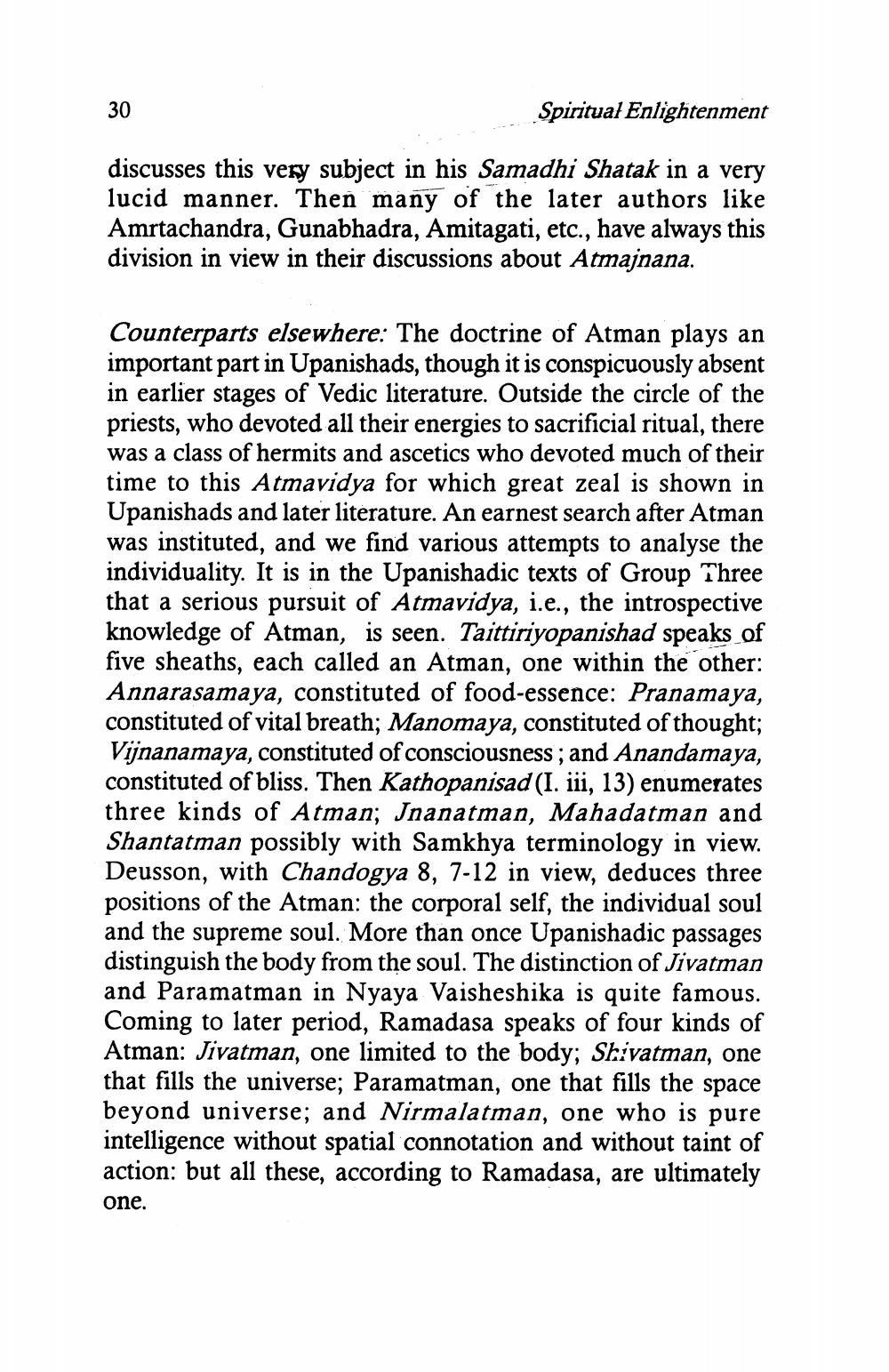________________
30
Spiritual Enlightenment
discusses this very subject in his Samadhi Shatak in a very lucid manner. Then many of the later authors like Amrtachandra, Gunabhadra, Amitagati, etc., have always this division in view in their discussions about Atmajnana.
Counterparts elsewhere: The doctrine of Atman plays an important part in Upanishads, though it is conspicuously absent in earlier stages of Vedic literature. Outside the circle of the priests, who devoted all their energies to sacrificial ritual, there was a class of hermits and ascetics who devoted much of their time to this Atmavidya for which great zeal is shown in Upanishads and later literature. An earnest search after Atman was instituted, and we find various attempts to analyse the individuality. It is in the Upanishadic texts of Group Three that a serious pursuit of Atmavidya, i.e., the introspective knowledge of Atman, is seen. Taittiriyopanishad speaks of five sheaths, each called an Atman, one within the other: Annarasamaya, constituted of food-essence: Pranamaya, constituted of vital breath; Manomaya, constituted of thought; Vijnanamaya, constituted of consciousness; and Anandamaya, constituted of bliss. Then Kathopanisad (I. iii, 13) enumerates three kinds of Atman; Jnanatman, Mahadatman and Shantatman possibly with Samkhya terminology in view. Deusson, with Chandogya 8, 7-12 in view, deduces three positions of the Atman: the corporal self, the individual soul and the supreme soul. More than once Upanishadic passages distinguish the body from the soul. The distinction of Jivatman and Paramatman in Nyaya Vaisheshika is quite famous. Coming to later period, Ramadasa speaks of four kinds of Atman: Jivatman, one limited to the body; Shivatman, one that fills the universe; Paramatman, one that fills the space beyond universe; and Nirmalatman, one who is pure intelligence without spatial connotation and without taint of action: but all these, according to Ramadasa, are ultimately
one.




